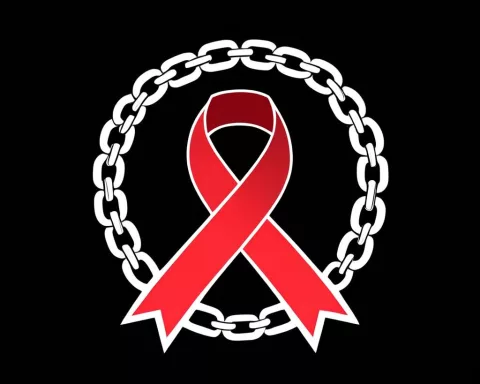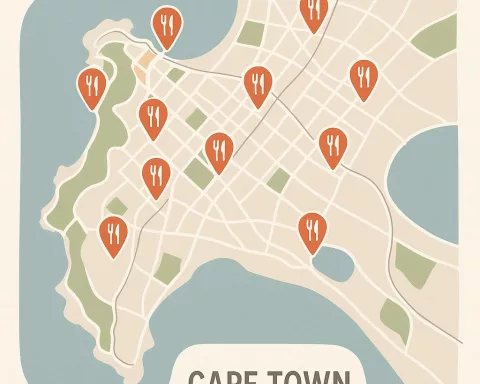Crime in South Africa is a tough issue shaped by many factors. The past of apartheid created deep inequalities that still affect people today, especially young black men who face high unemployment and few chances for jobs. Recently, a police commissioner stirred controversy by saying most crimes are committed by black men, leading many to discuss the bigger problems behind these numbers. Artists and community leaders are working hard to highlight these issues and push for change, showing that education and job opportunities are key to breaking the cycle of crime. South Africa needs everyone to work together, building trust and understanding, to create a safer and fairer society for all.
What are the main factors contributing to crime in South Africa?
Crime in South Africa is influenced by several key factors:
- Historical Context: The legacy of apartheid created deep-seated inequalities.
- Socio-Economic Conditions: High unemployment rates and limited opportunities, especially among young black men.
- Cultural Dynamics: Artistic movements highlight social injustices and call for change.
- Community Engagement: Trust-building between law enforcement and communities is essential for effective crime prevention.
The Controversy Over Crime Statistics
In recent years, a statement by KwaZulu-Natal Police Commissioner, Lieutenant-General Nhlanhla Mkhwanazi, has fueled intense debate across South Africa. Mkhwanazi sparked controversy by asserting that black men are predominantly responsible for crime in the country. This assertion was made at a public event where he presented law enforcement data revealing a significant racial disparity in crime, particularly among young males aged 16 to 25.
During his presentation, Mkhwanazi shared five years’ worth of data indicating that the vast majority of arrested individuals were black men. The statistics showed that of the 60,000 criminals apprehended within this age group, 57,691 were black men. Such figures have triggered powerful reactions, prompting serious discussions about the implications of these numbers and the broader societal issues they might reflect.
Mkhwanazi’s comments have drawn attention to South Africa’s ongoing struggle with crime prevention. He stressed the importance of addressing the high involvement of young black men in criminal activities as crucial for reducing crime rates. His office meticulously tracks the racial identities of those arrested for serious crimes, leading to the compilation of these noteworthy statistics.
The Role of Historical and Socio-Economic Factors
Critics have pointed out that the South African Police Service (SAPS) often faces scrutiny over crime statistics and their interpretations. Increasingly, there’s a push for more nuanced approaches to understanding crime, urging policies that not only target criminal behavior but also investigate underlying causes. This viewpoint highlights the need to comprehend why specific communities, particularly black communities, have higher levels of criminality.
South Africa’s complex socio-political history plays a pivotal role in shaping current realities. The legacy of apartheid, characterized by deeply entrenched racial segregation and economic inequalities, continues to impact many communities. During the apartheid era, black South Africans suffered systemic disadvantages, including limited access to quality education, employment opportunities, and economic resources. These historical inequities significantly contribute to the socio-economic challenges prevalent in many black communities today.
In examining Mkhwanazi’s statement, it’s essential to consider the broader historical and socio-economic context. Patterns of criminality are not solely the result of individual choices but are intrinsically linked to systemic factors. For example, the high unemployment rate among young black men often leads to desperation, driving some to engage in illegal activities as a means of survival. The absence of adequate social support systems and opportunities further exacerbates this trend.
The Cultural Response and Ongoing Efforts
Artistic and cultural movements in South Africa have long addressed these pressing issues. During apartheid, art served as a potent tool for political expression and social commentary. Artists used their work to expose racial injustices and advocate for societal change. This tradition endures, with contemporary artists and cultural leaders exploring themes of identity, inequality, and the pursuit of justice in post-apartheid South Africa.
The debate surrounding Mkhwanazi’s remarks underscores an urgent need for comprehensive solutions. While law enforcement is crucial in maintaining public safety, tackling crime requires a holistic approach. Initiatives aimed at improving education, creating employment opportunities, and strengthening community support systems are vital in addressing the root causes of criminal behavior.
Education, in particular, stands out as a cornerstone for transformation. Quality education equips young people with the skills and knowledge necessary to pursue legitimate career paths and break the cycle of poverty. Investment in education, along with mentorship programs and vocational training, can empower young black men by offering alternatives to criminal involvement.
Paths Toward a More Equitable Society
Promoting inclusive economic growth is also essential. Policies that encourage entrepreneurship and support small businesses can generate jobs and stimulate local economies. By reducing economic disparities and providing equal opportunities for all, South Africa can make significant progress in addressing the socio-economic factors contributing to crime.
Community engagement and collaboration are key components of a successful crime reduction strategy. Building trust between law enforcement agencies and the communities they serve can enhance cooperation, leading to more effective crime prevention efforts. Initiatives that foster dialogue, understanding, and mutual respect can bridge divides and cultivate a sense of shared responsibility in creating safer neighborhoods.
As South Africa navigates the complexities of crime and social justice, the dialogue must remain open and inclusive. Diverse voices, particularly those from marginalized communities, should play a crucial role in shaping policies and solutions. By acknowledging the intricate web of factors influencing crime and collaborating toward sustainable change, South Africa can aspire toward a more just and equitable society.
In conclusion, the discussion sparked by Lieutenant-General Mkhwanazi’s statement serves as a poignant reminder of the multifaceted nature of crime in South Africa. It calls for a deeper examination of historical, socio-economic, and cultural dimensions that contribute to current challenges. Through collaborative efforts and a commitment to addressing root causes, there lies hope for a more harmonious and secure future for all South Africans.
“`markdown
FAQ on Crime in South Africa
What are the main factors contributing to crime in South Africa?
Crime in South Africa is influenced by several key factors, including:
1. Historical Context: The legacy of apartheid has created deep-seated inequalities that continue to affect individuals and communities.
2. Socio-Economic Conditions: High unemployment rates, particularly among young black men, and limited job opportunities contribute to criminal behavior.
3. Cultural Dynamics: Artistic movements are raising awareness about social injustices and advocating for change.
4. Community Engagement: Building trust between law enforcement and communities is essential for effective crime prevention and safety.
Why has the statement by the KwaZulu-Natal Police Commissioner sparked controversy?
Lieutenant-General Nhlanhla Mkhwanazi’s statement that most crimes are committed by black men has ignited intense debate due to its racial implications. His comments, backed by data showing a significant racial disparity in arrests, prompted discussions about the underlying societal issues, including the socio-economic challenges faced by black communities.
How does apartheid’s legacy continue to affect crime in South Africa today?
The apartheid era established systemic disadvantages for black South Africans, including limited access to quality education and employment opportunities. These historical inequities have contributed to current socio-economic challenges, particularly high unemployment rates among young black men, which can lead to increased criminal activity as a means of survival.
What role does education play in addressing crime in South Africa?
Education is considered a cornerstone for transformation, as it equips young people with the skills and knowledge necessary to pursue legitimate career paths. Investment in quality education, mentorship programs, and vocational training can empower individuals, particularly young black men, by providing alternatives to criminal involvement and breaking the cycle of poverty.
How can community engagement contribute to reducing crime rates?
Community engagement is vital for successful crime reduction strategies. Building trust between law enforcement and the communities they serve fosters cooperation and leads to more effective crime prevention efforts. Initiatives that promote dialogue, understanding, and mutual respect can bridge divides and cultivate a sense of shared responsibility for creating safer neighborhoods.
What steps can South Africa take to create a more equitable society?
To create a more equitable society, South Africa should focus on:
– Promoting inclusive economic growth through policies that encourage entrepreneurship and support small businesses.
– Reducing economic disparities by providing equal opportunities for all.
– Strengthening community support systems and enhancing education access.
– Encouraging collaborative efforts that involve diverse voices from marginalized communities in shaping policies and solutions.
By addressing these areas, South Africa can work towards reducing the socio-economic factors that contribute to crime and fostering a safer, more just society.
“`












